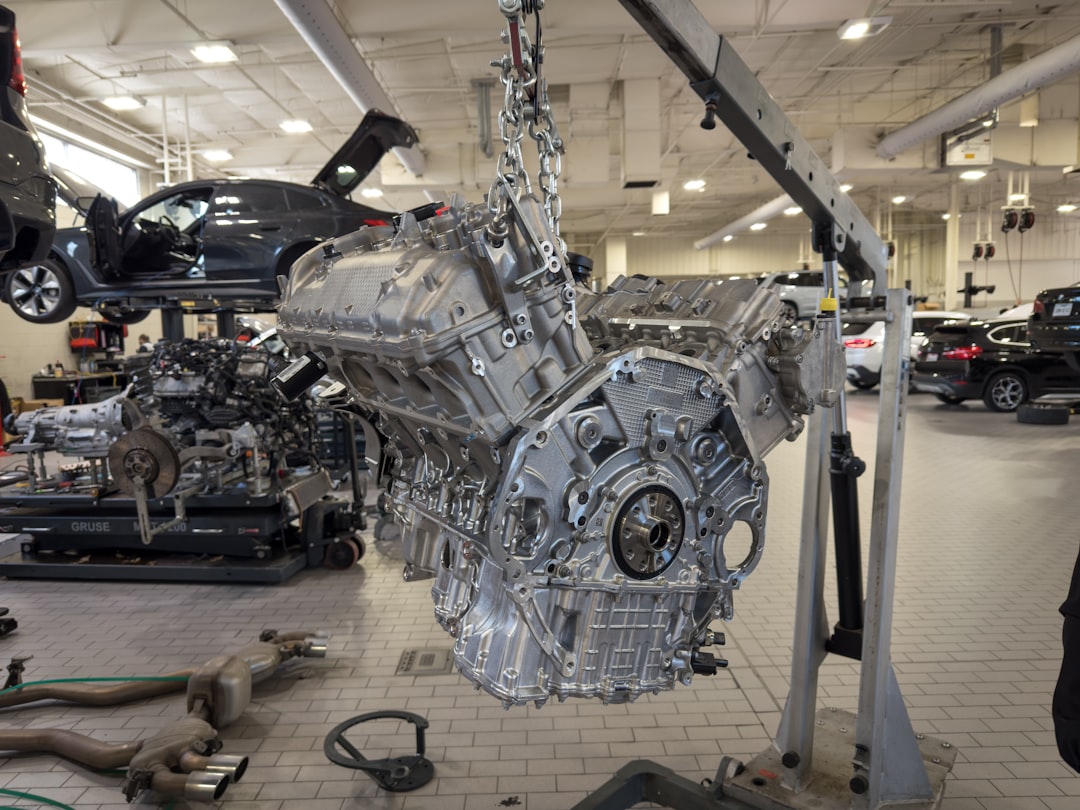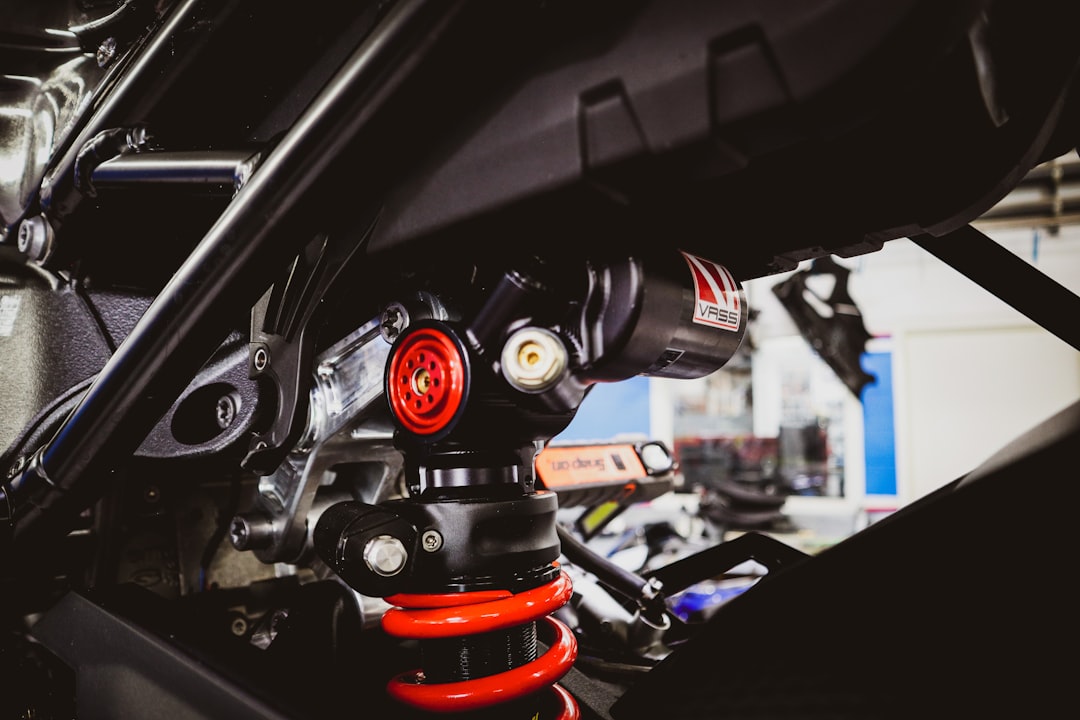

Engage prospects with a scan and streamline customer engagement with FREE QR code marketing tools by Sona – no strings attached!
Create a Free QR CodeFree consultation

No commitment

Engage prospects with a scan and streamline customer engagement with FREE QR code marketing tools by Sona – no strings attached!
Create a Free QR CodeFree consultation

No commitment
In today’s digitally driven world, QR codes have evolved from novelty to strategic powerhouse for bridging offline engagement with online action. For new auto parts retailers, QR codes in marketing provide a frictionless and highly effective way to capture leads, drive repeat purchases, and simplify the customer journey without requiring app downloads or heavy technical lift.
As competition intensifies, retailers face common pain points: anonymous walk-in traffic, delayed or manual data entry, and missed opportunities to turn peak-intent moments into actionable leads. QR codes embedded across signage, packaging, receipts, and displays transform each offline encounter into a measurable digital touchpoint. This lets marketing and operations teams move quickly with timely follow-up, smarter segmentation, and closed-loop attribution.
This article outlines practical strategies, best practices, and advanced tools that help new auto parts retailers capture both anonymous and known leads with QR codes. You will see how to build high-value audiences, integrate QR into a multichannel strategy, and use analytics to connect scans to revenue. The result is a repeatable playbook that turns physical browsing into digital conversion at scale.

QR codes solve one of the sector’s costliest challenges: losing high-value prospects who browse, ask questions, or pick up a flyer but never submit their information. Paper forms, static brochures, and passive signage rarely capture spontaneous interest. By contrast, scannable touchpoints meet shoppers in their moment of curiosity and move them directly into your CRM, loyalty, or e-commerce flow via mobile-first tools like Google Forms.
The shift is simple. Replace analog activities with QR-enabled actions that reduce effort and increase speed. Shelf talkers become gateways to fitment checks, warranty registration, and promotion unlocks. Packaging becomes a portal to installation guides and reorder options. Receipts become springboards to reviews and loyalty bonuses. Each scan captures intent, creates a record, and invites a next step aligned with the buyer journey.
For auto parts marketers and operations teams, every scan becomes a bridge from offline to online. Whether it is a first-time visitor comparing brake kits or a loyal customer opting in for maintenance reminders, QR codes create real-time momentum toward conversion.

Auto parts shoppers frequently browse, compare, and research in-store before deciding. Without a quick way to convert that curiosity into a digital relationship, retailers miss timely outreach and lose attribution clarity. See First-touch vs last-touch attribution models from Sona.
They are especially valuable on assets like shelf tags, end cap signage, fitment charts, and printed flyers that already drive attention but struggle to prompt immediate response. When scanning is faster than asking for help, QR codes transform passive exploration into measurable engagement. For additional retail rollout guidance, review this retail rollout viewpoint.
Consider two examples. Inventory stickers with unique codes show which brake pads or batteries attract the most in-store scans, guiding stock decisions and featured placements. Direct mail pieces with distinct QR codes track response by neighborhood and offer type, informing localized promotions and inventory allocation. With QR data, new auto parts retailers compete on insight rather than intuition.

QR codes are versatile tools that activate specific actions aligned with a retail environment. Select formats that match your buyers’ intent and your team’s goals, then design destinations that make the next step obvious and rewarding.
Dynamic QR codes are recommended for most campaigns since they support analytics, content updates, and future-proofing. Static codes are sufficient for unchanging destinations like a warranty terms PDF or a general service page.
With a centralized platform like Sona QR, you can manage all formats, switch destinations without reprinting, and compare performance by code type, asset, and campaign.

Growth hides in everyday touchpoints that already capture attention but rarely capture data. By adding thoughtful QR entry points across your environment, you convert casual moments into measurable engagement while shedding light on which products and messages earn the most interest.
Prioritize zones with high dwell time or high decision impact. Within auto parts stores, that typically includes categories with complex fitment concerns, variable pricing, or safety implications where customers seek reassurance or expert guidance.
Align placements with real buyer behavior. For instance, brake and suspension aisles often trigger detailed research. Battery bays often prompt fitment confirmations. These contexts guide your landing page content, messaging, and capture flow.
QR codes shine when they replace analog processes with clear digital outcomes. The following use cases map to core moments in a typical auto parts buyer journey, from discovery to post-purchase.
Layer these use cases to create a continuous, data-rich journey. A shopper who scans for fitment, joins loyalty at checkout, and later scans a receipt for warranty activation generates three distinct signals that can drive personalized outreach.
Every scan offers context: where the shopper was, what they were looking at, and what stage of the journey they might be in. By creating multiple QR entry points and tagging each one, you automatically build segmented audiences and deliver more relevant follow-up with Sona’s Intent-Driven Retargeting.
Start by mapping journey stages to placements. Awareness scans often come from mailers or window signage. Consideration scans happen in-aisle near complex products. Conversion scans frequently happen at POS or on receipts. Post-purchase scans follow in emails or packaging.
For new auto parts retailers, useful distinctions include DIY hobbyists versus professional mechanics, new vehicle owners versus high-mileage vehicles, and emergency replacement buyers versus planned upgrade enthusiasts. These nuances influence messaging, urgency, and the balance between education and promotion. Sona QR streamlines this process by making every code a smart audience gateway tied to your downstream tools. For deeper tactics, explore Sona QR’s automotive industry guide.
QR codes are connective tissue across offline and online channels, ensuring consistent messaging and measurable actions wherever your customers encounter your brand. When each physical asset triggers a digital step, you not only reduce friction but also create a unified data layer.
This approach eliminates silos. Instead of guessing whether a window display or a flyer matters, you know exactly which placements generate scans, form fills, and sales. With that visibility, you can double down on winners and adjust underperformers fast.
Centralized platforms like Sona QR let you manage codes across channels and locations, monitor performance in one dashboard, and sync scan events with your CRM and ad platforms for a coherent omni-channel strategy.
Even the best idea falters without disciplined execution. Use this checklist to align goals, formats, design, deployment, and optimization. Each step ensures your QR program captures real demand and proves its impact.
This repeatable process helps teams tackle the core causes of missed lead capture: friction, ambiguity, and blind spots. Execute the steps in order, then loop back to optimize based on real results. Over time, your store becomes a network of digital on-ramps feeding a well-instrumented funnel.
Without trustworthy analytics, QR campaigns risk becoming vanity exercises. The goal is not to count scans in isolation; it is to connect scans to meaningful outcomes like sign-ups, orders, warranty activations, and repeat purchases. When reporting spans from first scan to closed sale, budgets can be confidently shifted toward the placements and messages that work.
Modern QR platforms should show granular details and tie into your existing stack. For retail operations with multiple locations or seasonal promotions, centralized tracking eliminates guesswork and reduces the lag between performance and optimization.
Sona QR and Sona, an AI-powered marketing platform, streamline this workflow: scan data is captured in real time, synced to your CRM, and linked to revenue through identity resolution and multi-touch attribution. The result is performance-grade visibility that turns QR from a tactical add-on into a growth engine.
Consistency and clarity determine QR success. The technology works, but results hinge on smart placement, simple CTAs, and automation that honors the shopper’s intent. These best practices keep your program focused on business outcomes.
Start small with two or three high-impact placements, then expand. With each cycle, use your data to prioritize the next best location and message. Sona QR helps you create and track your first codes quickly, so you can iterate based on real-world feedback.

Retailers who integrate QR across their footprint consistently report faster lead capture, smarter segmentation, and higher retention. The common thread is a tight connection between context, content, and follow-up.
Use these themes to spark ideas in your own environment. The best concepts are grounded in your customers’ real moments: deciding between brands, confirming fitment, or weighing DIY versus professional installation.
Executing a QR strategy is straightforward, yet small missteps can suppress results. The following expert tips and pitfalls will help you build campaigns that scale.
By focusing on these fundamentals and learning from early tests, teams avoid common pitfalls like too many calls to action, unclear destinations, or under-tagged assets. Over time, the data will tell you which combinations of placement, message, and offer maximize ROI.
For new auto parts retailers, QR codes are more than a convenient shortcut. They are a foundation for recapturing lost opportunities, surfacing real engagement signals, and delivering cohesive offline-to-online journeys. By embedding QR touchpoints across in-store and post-purchase experiences, you ensure that no lead remains anonymous and every interaction can drive measurable value.
The benefits go beyond operations. QR-driven campaigns supply actionable insights to reduce churn, lift e-commerce conversion rates, and maintain consistent messaging across channels. Whether your goal is to accelerate lead capture, prevent missed upsells, or unify targeting, adopting a QR-first approach lets you graduate from manual guesswork to data-driven growth.
In a landscape where every shopper’s attention is contested, retailers who swiftly connect offline moments to digital journeys will outpace their peers. Begin by turning each product label, print piece, or in-person event into a high-value entry point for growth. Generate a few dynamic codes, deploy them in proven hot zones, and let the data guide your next move. With a platform like Sona QR and the measurement capabilities of Sona, you can capture demand at the source, attribute scans to revenue, and scale what works. Start creating QR codes for free.
QR codes have transformed new auto parts retailers from traditional sales points into dynamic, measurable lead-generation hubs. Whether it’s capturing qualified leads, enhancing in-store and online customer experiences, or streamlining follow-ups, QR codes replace outdated methods with instant, mobile-friendly interactions that deliver real-time data—turning every product label, display, or ad into a powerful conversion tool. Imagine instantly knowing which parts and promotions spark the most interest and being able to optimize your marketing on the fly.
With Sona QR, you can create dynamic, trackable QR codes in seconds that update campaigns without costly reprinting and seamlessly connect every scan to your sales pipeline. No more guesswork or missed opportunities—just smarter, more effective lead capture that drives measurable growth. Start for free with Sona QR today and turn every scan into a new customer, a stronger relationship, or a closed deal.
New auto parts retailers are increasingly using QR codes to capture leads, drive repeat purchases, and simplify the customer journey by bridging offline engagement with online action without requiring app downloads.
QR codes provide quick, frictionless access to fitment checks, warranty registration, installation guides, promotions, and loyalty sign-ups, turning passive browsing into measurable digital engagement.
Retailers have used QR codes on battery and brake displays to capture leads, reduce lost sales by connecting shelf tags to live inventory and fitment tools, and increased engagement by adding codes on loyalty cards for installation videos and maintenance reminders.
They place QR codes on shelf talkers, packaging, receipts, signage, and direct mail to route shoppers to lead capture forms, loyalty enrollment, promotions, and expert chat, enabling instant data capture into CRMs and automated follow-up.
QR codes reduce manual data entry, increase speed of lead capture, provide dynamic content updates, enable detailed analytics and revenue attribution, lower campaign costs, and create seamless offline-to-online customer journeys.
Dynamic QR codes are preferred for campaigns needing analytics and content updates, while static codes work for permanent content like warranty PDFs; common formats include web links, lead capture forms, vCards, SMS or email messages, and inventory links.
High-impact placements include shelf tags, packaging, receipts, store signage, end caps, direct mail inserts, point-of-sale counters, and event materials to capture high-intent customer moments.
By creating unique codes for different journey stages and segments, retailers can tag and track scanner behavior by location, product category, and timing, syncing this data to CRM and ad platforms for targeted follow-up campaigns.
They use QR codes across print collateral, social media, direct mail, digital signage, and events to ensure consistent messaging, measurable actions, and unified data that connects offline and online customer interactions.
Retailers should define clear goals, choose the appropriate QR code type, design and test codes for scannability, deploy in high-impact channels with aligned content, and track performance for iterative optimization.
Platforms should provide granular scan data by time, device, location, and asset, enable revenue attribution, integrate with CRM and e-commerce systems, and offer full-funnel visibility from scan to sale.
Use unique codes per placement, add UTM parameters for tracking, trigger automated follow-ups, educate staff and customers about benefits, and start with a few high-impact placements to expand based on data.
Avoid placing codes in low-traffic areas, using unreadable or cluttered designs, failing to tag URLs for analytics, having unclear calls to action, and relying on static codes for dynamic content.
Use Sona QR's trackable codes to improve customer acquisition and engagement today.
Create Your FREE Trackable QR Code in SecondsJoin results-focused teams combining Sona Platform automation with advanced Google Ads strategies to scale lead generation

Connect your existing CRM

Free Account Enrichment

No setup fees
No commitment required

Free consultation

Get a custom Google Ads roadmap for your business






Launch campaigns that generate qualified leads in 30 days or less.
